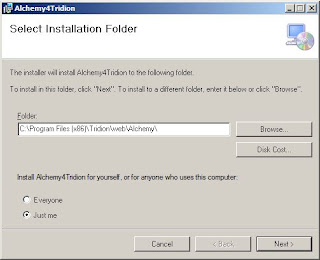2. Write xslt and add it as “Embedded
Resource” in your templating solution:
The xslt code:
<?xml version="1.0"?>
<xsl:stylesheet version="1.0"
xmlns:xsl="http://www.w3.org/1999/XSL/Transform"
xmlns:owl="http://www.w3.org/2002/07/owl#"
xmlns:rdf="http://www.w3.org/1999/02/22-rdf-syntax-ns#"
xmlns:rdfs="http://www.w3.org/2000/01/rdf-schema#"
xmlns:xsd="http://www.w3.org/2001/XMLSchema#"
xmlns:tcmt="http://www.tridion.com/ContentManager/5.2/Taxonomies#"
xmlns:tcmc="tcm:0-9-1/Categories#">
<xsl:template match="/rdf:RDF">
<publication>
<xsl:apply-templates select="tcmt:Taxonomy"/>
</publication>
</xsl:template>
<xsl:template match="tcmt:Taxonomy">
<category>
<xsl:attribute name="id"
>
<xsl:value-of select="@rdf:about"
/>
</xsl:attribute>
<xsl:for-each select="tcmt:rootKeyword">
<xsl:call-template name="keyword">
<xsl:with-param name="tcmId"
select="@rdf:resource"/>
</xsl:call-template>
</xsl:for-each>
</category>
</xsl:template>
<xsl:template name="keyword">
<xsl:param name =
"tcmId" />
<keyword>
<xsl:attribute name="id"
>
<xsl:value-of select="$tcmId"
/>
</xsl:attribute>
<xsl:attribute name="title"
>
<xsl:value-of select="/rdf:RDF/*[@rdf:about
= $tcmId]/rdfs:label" />
</xsl:attribute>
<xsl:for-each select="/rdf:RDF/*[@rdf:about
= $tcmId]/tcmt:childKeyword">
<xsl:call-template name="keyword">
<xsl:with-param name="tcmId"
select="@rdf:resource"/>
</xsl:call-template>
</xsl:for-each>
</keyword>
</xsl:template>
</xsl:stylesheet>
Add it as "OwlTaxonomies.xml" to the solution as below:
Make the file a embedded resource by selecting build action to "Embedded Resource" in file properties:
3. Transform the xml (RDF/OWL-Lite) using xslt and add the result to the output (The Example Code):
[TcmTemplateTitle("Generate
Taxonomy Xml")]
class GenerateTaxonomyXml : TemplateBase
{
///
<summary>
///
Main function for TBB. Starting point of TBB code.
///
</summary>
public override void Transform(Engine engine,
Package package)
{
//
Call the base function to initialize the engine and package objects.
Initialize(engine, package);
Publication pub = GetPublication();
var repo = GetPublication() as Repository;
TaxonomiesOwlFilter fltr = new TaxonomiesOwlFilter(repo.Session);
var taxonomies = repo.GetTaxonomiesOwl();
//
Load the style sheet.
XslCompiledTransform xslTransformer = new XslCompiledTransform();
//load
the Xsl from the assembly
Stream xslStream = LoadResourceAsStream("MyTest.TemplateBuildingBlocks.Resources.OwlTaxonomies.xslt");
xslTransformer.Load(XmlReader.Create(xslStream));
string strXmlListItems = taxonomies.OuterXml;
StringReader srXml = new StringReader(strXmlListItems);
XmlReader readerXml = new XmlTextReader(srXml);
//
Execute the transform and output the results to a file.
StringWriter sw = new StringWriter();
XmlWriter writer = new XmlTextWriter(sw);
xslTransformer.Transform(readerXml,
writer);
package.PushItem("Output", package.CreateStringItem(ContentType.Xml, sw.ToString()));
}
private Stream LoadResourceAsStream(string resourceName)
{
var assembly = Assembly.GetExecutingAssembly();
return assembly.GetManifestResourceStream(resourceName);
}
}
The Output:
<?xml version="1.0"
encoding="utf-8"?>
<publication xmlns:owl="http://www.w3.org/2002/07/owl#"
xmlns:rdf="http://www.w3.org/1999/02/22-rdf-syntax-ns#"
xmlns:rdfs="http://www.w3.org/2000/01/rdf-schema#"
xmlns:xsd="http://www.w3.org/2001/XMLSchema#"
xmlns:tcmt="http://www.tridion.com/ContentManager/5.2/Taxonomies#"
xmlns:tcmc="tcm:0-9-1/Categories#">
<category id="tcm:9-5039-512">
<keyword id="tcm:9-5256-1024"
title="Level1 - Test
Keyword1">
<keyword id="tcm:9-5257-1024"
title="Level2 - Test
Keyword1" />
</keyword>
<keyword id="tcm:9-5258-1024"
title="Level1 - Test
Keyword2 - (localized)">
<keyword id="tcm:9-5259-1024"
title="Level2 - Test
Keyword2" />
</keyword>
<keyword id="tcm:9-5260-1024"
title="Local Keyword"
/>
</category>
<category id="tcm:9-5040-512"
/>
<category id="tcm:9-5041-512"
/>
</publication>






























